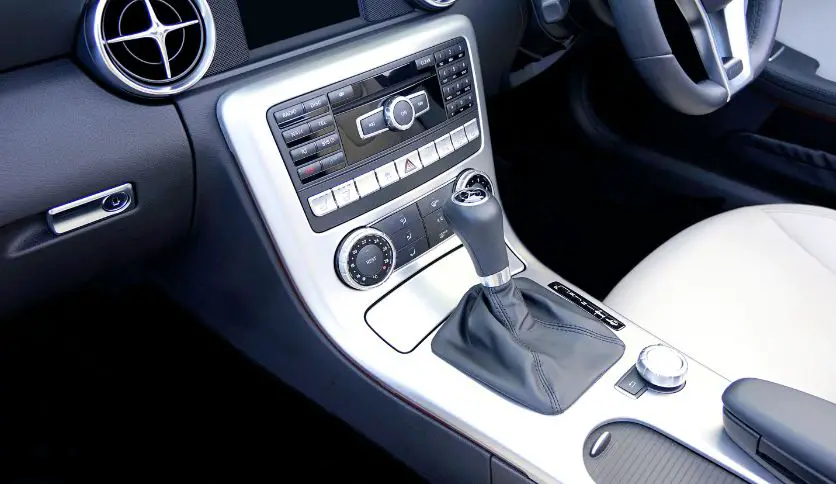A truck not moving in any gear with an automatic transmission indicates a significant issue and requires professional attention. This problem can have various causes, such as a faulty torque converter, damaged transmission bands, or low transmission fluid level.
It is important to immediately bring your truck to a qualified mechanic to diagnose and resolve the issue efficiently and prevent further damage. Prompt, professional intervention is crucial to identify the underlying problem, ensuring the safe and reliable operation of your truck’s automatic transmission system.
Neglecting this issue can lead to more extensive and expensive repairs.
Contents
- 1 Understanding Automatic Transmissions
- 2 Truck won’t Move In Any Gear: Initial Checks.
- 3 Signs Of Transmission Problems
- 4 Linking Symptoms To Problems
- 5 Hydraulic System Assessment
- 6 Mechanical Components Inspection
- 7 Electrical Components Testing
- 8 When To Seek Professional Help
- 9 Preventive Maintenance Tips
- 10 Frequently Asked Questions On Truck Won’t Move In Any Gear Automatic Transmission.
- 11 Conclusion
Understanding Automatic Transmissions
Automatic transmissions are complex systems that allow vehicles to shift gears automatically based on speed, load, and other factors. They comprise several key components that work together to facilitate smooth gear shifts.
| Basic components of automatic transmissions | How automatic transmissions function | Common automatic transmission terms |
|---|---|---|
| 1. Torque converter | 1. Hydraulic pressure control gear changes | 1. Gear ratio |
| 2. Planetary gearsets | 2. Transmission fluid cools and lubricates components | 2. Shift solenoid |
| 3. Clutches and bands | 3. Transmission control module manages shifting | 3. Overdrive |
| 4. Valve body | 4. Sensors monitor vehicle speed and throttle position | 4. Lock-up torque converter |
Truck won’t Move In Any Gear: Initial Checks.
When troubleshooting a truck that won’t move in any gear, starting with some initial checks is essential. Inspecting the transmission fluid level and quality is the first step. Ensure the fluid is at the correct level and doesn’t appear dirty or contaminated.
Next, analyze the gear selector position and response. Ensure the gear selector is properly aligned with the desired gear and check for any delay or inconsistency in the gear engagement.
Also, verify the parking brake status. Please ensure the parking brake is fully released, as it can prevent the truck from moving even when in gear.
Signs Of Transmission Problems

If your truck doesn’t move in any gear with an automatic transmission, it could signal transmission problems. Pay attention to these common indicators that something is wrong with your transmission.
Unusual Noises: One of the first signs of transmission trouble is hearing strange noises. Whining, buzzing, or clunking sounds could indicate internal mechanical issues that need attention.
Warning Lights on Dashboard: Another telltale sign is the presence of warning lights on your dashboard. The check engine or transmission light may illuminate, indicating a fault in the system.
Delayed or No Response from Transmission: A transmission problem can manifest as delayed or no response when shifting gears. If you experience a delay, hesitation, or a lack of power when accelerating, it may be due to a faulty transmission.
Linking Symptoms To Problems
A truck that won’t move in any gear with an automatic transmission can indicate various problems. One possible cause is low transmission fluid levels. Insufficient fluid can prevent the transmission from engaging properly. It’s important to check the fluid level and add more if necessary.
Another issue could be a leakage in the transmission system. Leaks can occur due to damaged seals or gaskets. Any signs of fluid leakage should be addressed promptly to prevent further damage.
Electronics also play a crucial role in the functioning of automatic transmissions. Failure of the electronic control module or sensors can result in gear engagement problems. Proper diagnosis and repair of these components are necessary to restore the truck’s mobility.
The torque converter is responsible for transmitting power from the engine to the transmission. A malfunctioning torque converter can cause the truck to jerk or slip in gear. Similarly, solenoids, which control fluid flow within the transmission, can also experience issues and lead to gear problems.
In summary, a truck that refuses to move in any gear with an automatic transmission can be caused by various factors such as low fluid levels, leaks, faulty electronic control modules or sensors, and torque converter or solenoid malfunctions.
Hydraulic System Assessment
When a truck doesn’t move in any gear with an automatic transmission, it is important to assess the hydraulic system to identify potential issues. One key aspect of this assessment is checking the transmission pressure. The transmission pressure can be viewed as a reflection of the hydraulic pressure within the transmission. By checking the pressure, it is possible to determine if there are any abnormalities or malfunctions in the hydraulic system that might be causing the truck not to move.
Another crucial aspect of the hydraulic system assessment is examining the valve body for blockages. The valve body plays a vital role in controlling the flow of hydraulic fluid within the transmission. Any blockages within the valve body can disrupt the smooth operation of the hydraulic system, leading to a truck failing to move. By carefully inspecting the valve body, it is possible to identify and address any blockages that may be present, thus resolving the issue of the truck not moving in any gear.
Mechanical Components Inspection
Inspecting the mechanical components thoroughly is essential when a truck doesn’t move in any gear with an automatic transmission. Investigating the clutch and bands is a crucial step in identifying the issue. Inspect the condition of the clutch and bands for any signs of wear, damage, or slipping. Assessing the health of gears and bearings is also important as any irregularities in these components can affect the transmission’s functionality.
Check the gears for signs of damage or excessive wear. Ensure the bearings are properly lubricated and examine them for any failure indications, such as noise or vibration. Inspecting the transmission fluid for any contaminants or abnormal levels is also advisable.
By meticulously examining these mechanical components, you can pinpoint potential issues and take appropriate actions to address them, ultimately resolving the problem of a truck not moving in any gear with an automatic transmission.
Electrical Components Testing
One of the important steps in diagnosing a truck that won’t move in any gear with an automatic transmission is to test the electrical components. This involves scanning for error codes using a diagnostic tool. The diagnostic tool will help identify any potential issues with the electrical system. It is also important to inspect the wiring and electrical connections. Loose or damaged connections can cause electrical problems, which can affect the performance of the transmission. Inspecting the wiring and connections ensures everything is properly connected and functioning. By testing the electrical components and inspecting the wiring and connections, you can accurately determine the cause of the issue and take the necessary steps to resolve it.
When To Seek Professional Help
It can be frustrating when your truck won’t move in any gear with an automatic transmission. While there are some DIY repairs you can attempt, it is important to know the limitations of these fixes.
There are certain signs that indicate when it is necessary to seek professional help. For example, if you have tried basic troubleshooting steps such as checking the transmission fluid level and it hasn’t resolved the issue, it may be time to consult an expert. Additionally, if you don’t have the necessary knowledge, tools, or experience to diagnose and fix the problem, it is best to leave it to professionals.
Expert technicians have the skills and resources to identify the root cause of the issue accurately. They can perform advanced diagnostics and use specialized equipment to understand the problem comprehensively. Choosing professional help ensures that your truck is in capable hands and saves you time and potential further damage.
Preventive Maintenance Tips
Ensure your truck’s automatic transmission remains in optimal condition with these preventive maintenance tips. Discover how to address the issue of your truck not moving in any gear, avoiding costly repairs, and ensuring reliable transportation.
Regular maintenance schedules ensure the longevity and smooth operation of your truck’s automatic transmission. Adhering to these schedules can prevent issues that may cause your truck to not move in any gear. Here are some important tips to follow:
- Change transmission fluid and filter by the manufacturer’s recommended intervals. This helps maintain proper lubrication and cooling of the transmission components.
- Inspect and repair any transmission fluid leaks promptly to prevent low fluid levels, which can lead to transmission damage.
- Keep an eye on the condition of the transmission fluid. If it appears discolored or has a burnt smell, it may indicate internal problems requiring immediate attention.
- Ensure your truck’s engine is properly tuned and running smoothly. This can prevent excessive strain on the transmission.
- Opt for a transmission cooler if you frequently tow heavy loads or operate in high-temperature environments. This can help maintain optimal operating temperatures for your transmission.
- Adopt good driving habits, such as avoiding aggressive acceleration and deceleration, as well as excessive idling.
- Regularly check the condition and tension of the drive belts. Worn or loose belts can affect the operation of the transmission.
By incorporating these preventive maintenance practices into your routine, you can significantly extend the life of your truck’s automatic transmission and minimize the chances of it not moving in any gear.
Frequently Asked Questions On Truck Won’t Move In Any Gear Automatic Transmission.
Why Is My Truck Not Moving In Any Gear With Automatic Transmission?
If your truck doesn’t move in any gear with an automatic transmission, it could be due to low transmission fluid, a faulty torque converter, or a worn-out transmission. It’s important to have a professional diagnose the issue to determine the exact cause and ensure proper repairs are made.
Can A Bad Sensor Cause A Truck To Not Move In Any Gear With Automatic Transmission?
Yes, a malfunctioning sensor such as the speed or throttle position sensor can cause your truck to not move in any gear with an automatic transmission. These sensors provide important input to the transmission control module, which determines gear changes.
A diagnostic scan can help identify the specific sensor causing the issue.
What Should I Do If My Truck Is Stuck In Neutral And Won’t Move?
If your truck is stuck in neutral and won’t move, check the shift linkage to ensure it is properly connected and functioning. If the linkage is fine, the issue could be a transmission problem, such as a worn-out clutch or a faulty shift solenoid.
Contact a mechanic to diagnose and repair the issue.
Conclusion
It can be frustrating when your truck refuses to move in any gear with an automatic transmission. Identifying the root cause is key to finding the right solution. Various factors can contribute to this issue, from a malfunctioning torque converter to a faulty transmission control module.
Consulting a professional mechanic, conducting proper diagnostics, and performing necessary repairs will help get your truck back on the road smoothly and safely. Remember, regular maintenance and timely inspections are essential to prevent such problems in the future.

Hello, this is Wesley Shelton, currently working in a car restoration company for over 5 years. Before that, I was a worker at a small car repair shop. As I was a car freak from a young age and worked as a professional for over half a decade, I think I now know pretty much everything about every car and its parts. To establish my name as a professional and help others by sharing my knowledge, I’ve created this website, which I work on whenever I get free time. I hope you’ve enjoyed my informative blog!


